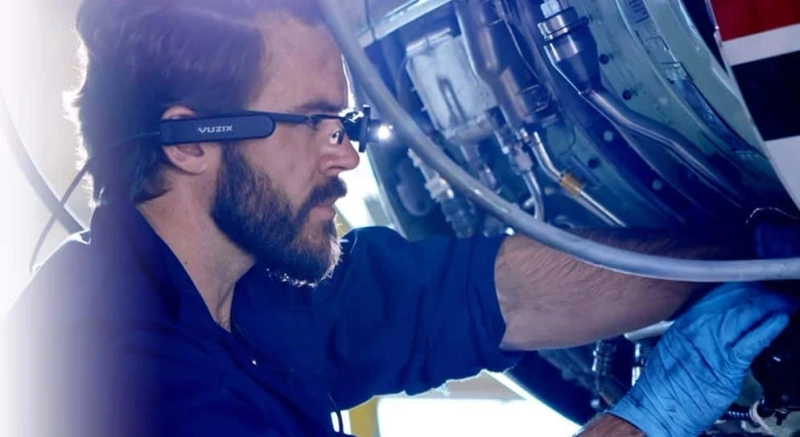Augmented reality smart glasses are responsible for the enhancement of reality with digital overlays, and they vary in shape, size and design. It augments your surroundings by adding digital elements to a live view, often by using the camera on a smartphone. The AR glasses work in a way in which they use a front camera in collaboration with software that can recognise anchors and landmarks. For example, augmented reality smart glasses that have an OLED display system can be used for sharing perspective in extreme detail with a 4K video streaming auto-focus camera. It lets the person on the job get expert advice on how to mend a machine in real time. Required that it has microphones, a wide field of view and voice inputs. It will also let you keep critical data where you need it while you stay hands-free with your head up. Some of their other uses include communication with Alexa and Siri for voice-controlled searches, and with GPS integration, one can view the virtual arrows that show directions.
What are the Common Components of an Augmented Reality System?
The components of AR vary according to their implementation, but the common components are categorised as hardware and software. Some of these components are:
- Processor: AR needs sufficient processing power to create the imagery needed to be placed in the right location so that it appears to exist in a real-world environment. These processors may be found in a mobile device or embedded in a wearable device like glasses.
- Display: In augmented reality, imagery is first created and then shown on some form of display.
- Mobile handheld device: It can either be a smartphone or a tablet screen in which AR hologram imagery can be viewed. It works in a way in which a user has to point his or her phone’s camera at a point where a live video hologram will be generated by the camera lens, overlaid with AR information.
- Wearable device: Smart glasses look like standard eyeglasses that contain a display visible to the wearer. If you wear the AR headset you would be able to see the embedded display with an informational overlay. VR headsets are different from AR as they do not let you see the real world directly. Instead, the video is displayed on the built-in screen which is opaque.
- Automotive HUDs: In heads-up displays or HUDs, the car’s windshield is used as a screen. A device helps to project an image of speed or directions, etc. from the dashboard on the windshield. Then the driver is able to see its reflection.
- Camera: It is the primary sensor required for AR. The camera is the primary source which feeds the live video to the processor and detects key facets of the environment. On these facets, the AR data is overlaid. The camera has no role in processing the digital information it is only responsible for providing the video feed.
- Other sensors: AR is designed for motion and requires additional types of sensors to operate including spatial sensors, like accelerometers and digital compasses that indicate the direction. They also have GPS sensors that are used to track the user’s location, microphones used to incorporate audio data into the simulation and LiDaR that uses lasers to quantify the exact distance.
- Input devices: When a person is on the move, they can not type commands into a computer. For such cases, AR systems are designed to work with all kinds of input technologies. For example, AR systems can work with mobile device touchscreen to provide natural interaction when a phone or tablet is available. Some other examples include voice recognition technology, which allows users to control the system through speech and gesture recognition. It is used to typically translate the motion of the user’s hand into commands.
Examples of Uses of Augmented Reality in Business
Many businesses and enterprises use augmented reality. Some of the key examples include:
- Design and Construction: Designers use augmented reality to watch hypothetical products in real environments. It can also be used to make virtual tweaks to products without using hands.
- Maintenance and Repairs: Many industries use AR technology to guide technicians on the steps of repairing and maintaining industrial equipment, entire buildings, etc. With AR, technicians can work on equipment without opening up printed manuals or websites. They can get detailed visual instructions atop the machinery itself.
- Training and Education: AR smart glasses are quite helpful for businesses as this technology helps them to provide an immersive experience for training employees. This allows them to visualise new products and concepts comprehensively and makes understanding complexities quite an easy task.
Augmented reality is a technology that enhances a real-life environment with a simulated one. It is widely used for communication with Alexa and Siri for voice-controlled searches, and with GPS integration, one can view virtual arrows that show directions.



